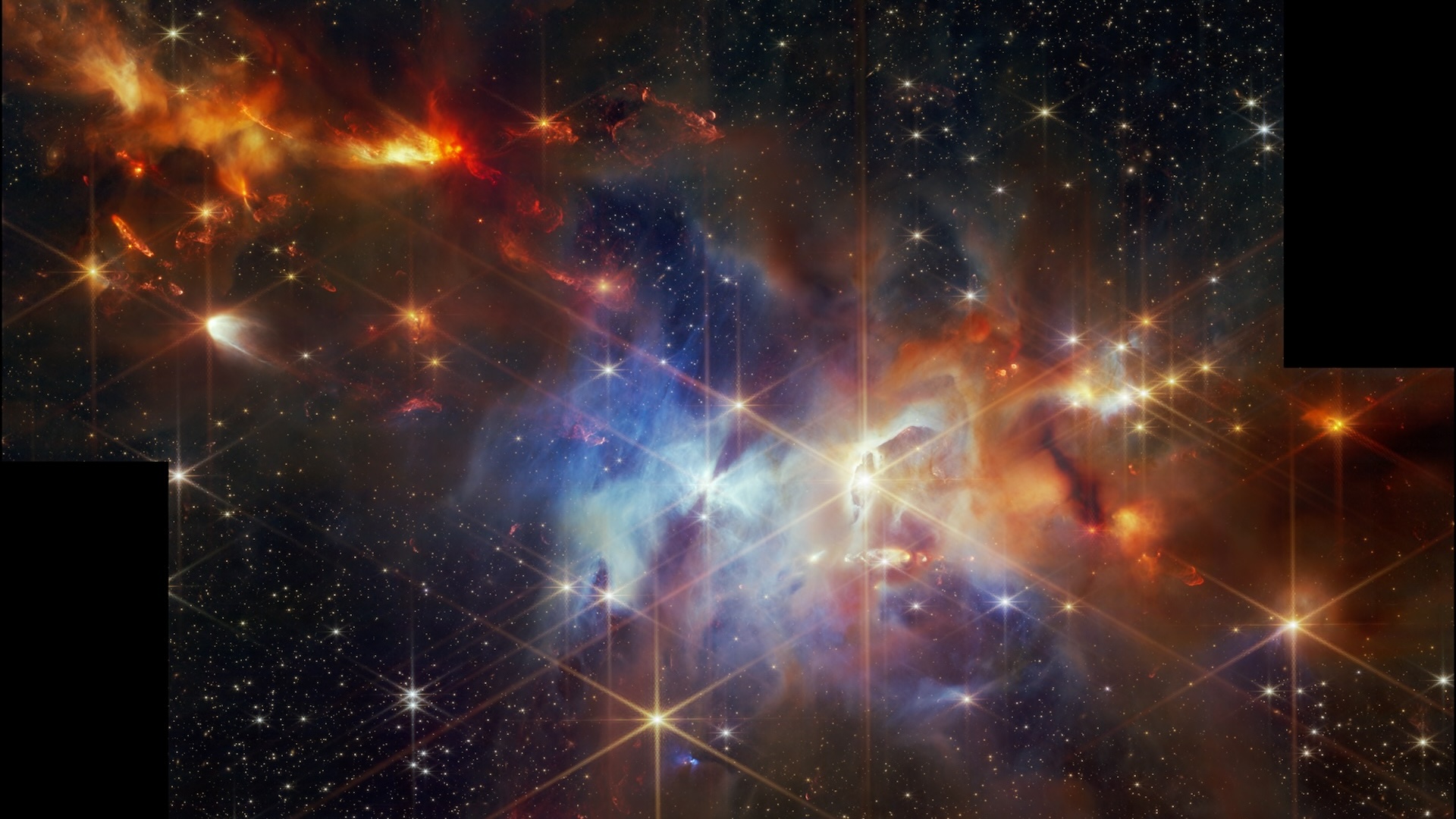Space photo of the week: James Webb telescope catches baby stars roaring to life
A new image of the Serpens Nebula captured by the James Webb Space Telescope shows that when clouds collapse to form stars, all of those stars spin in the same direction.

What it is: The Serpens Nebula
Where it is: 1,300 light-years away, in the constellation Serpens
When it was shared: Aug. 12, 2024
Why it's so special: This is a new image of an old favorite, the Serpens Nebula, where a cloud of gas and dust is lit up by starlight. Using its infrared capabilities, the James Webb Space Telescope (JWST) now reveals the source of that light: newborn stars.
The place to look in this image, taken with JWST's Near Infrared Camera, is the top-left corner. The bright-red streaks are jets of gas from newborn stars smacking into the surrounding gas and dust, creating shock waves. Crucially, they all slant in the same direction.
That's important because it provides evidence for the theory that when clouds of dust and gas collapse to form stars, all of those stars spin in the same direction. The trouble is, before JWST was around to observe in the infrared — to pierce thick clouds of dust and gas — it wasn't possible to see newborn stars or their jets in optical wavelengths, so it was impossible to confirm that theory.
Related: 35 jaw-dropping James Webb Space Telescope images
Sign up for the Live Science daily newsletter now
Get the world’s most fascinating discoveries delivered straight to your inbox.
"Astronomers have long assumed that as clouds collapse to form stars, the stars will tend to spin in the same direction,' said Klaus Pontoppidan, principal investigator at NASA's Jet Propulsion Laboratory in Pasadena, California. "However, this has not been seen so directly before. These aligned, elongated structures are a historical record of the fundamental way that stars are born."
Serpens is a reflection nebula, a cloud of gas and dust that does not create its own light but reflects light from stars close to or within it. All traces of color you see in this image — as filaments and wisps — are reflected starlight from newborn stars. Orange denotes where dust is in front of the reflected light.
The Serpens Nebula is about 1 million to 2 million years old — incredibly young in cosmic terms. This star-forming region is home to a dense cluster of newborn stars that are a mere 100,000 years old, which are visible at the center of the image.

Jamie Carter is a freelance journalist and regular Live Science contributor based in Cardiff, U.K. He is the author of A Stargazing Program For Beginners and lectures on astronomy and the natural world. Jamie regularly writes for Space.com, TechRadar.com, Forbes Science, BBC Wildlife magazine and Scientific American, and many others. He edits WhenIsTheNextEclipse.com.










